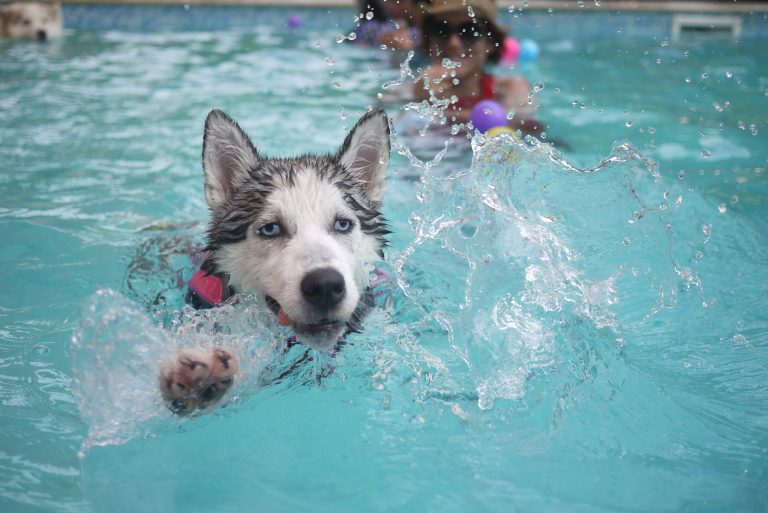Top Tips for Pool Safety

Having a backyard pool provides fun and relaxation for homeowners. But pools also come with serious safety risks if not properly secured. From clever latches to high-tech sensors, there are various ways to safeguard your residential pool area. This guide covers key tips to effectively secure your pool from unsupervised access.
Use Childproof Gates
Install childproof gates around all pool access points. Seek self-closing and self-latching gates that are challenging for little hands to open. Many have advanced locks requiring adult height to reach. Check that gates open outward and are compliant with code for your municipality. Gates should fully enclose the pool with no access from the house. Keep gates locked at all times when not in use. Gates form a critical barrier for child safety.
When installing gates, measure carefully to avoid any gaps that could allow a child to slip through. Weather stripping may be needed to ensure the gate seals tightly when closed. Avoid gates with openings or decorative cutouts that reduce the barrier effectiveness. Position latches high up, over 54 inches above ground. To prevent climbing, keep the area around gates clear of furniture or debris. Be diligent about locking gates and confirm they latch properly each time. Develop a routine of checking gates every time you allow access to the pool. Maintaining secure, properly latching gates is a fundamental safeguard.
Add Door Sensors
Outfit any doors providing direct access to the pool with sensors that alert you when the door is unexpectedly opened. There are wireless systems that trigger an alarm or notification on your phone when the door sensor detects activity. This allows you to respond immediately if the door to the pool area opens unsupervised. It acts as an extra safeguard in case a child slips through an improperly latched gate.
Check that door sensors cover all secondary doors like pet doors, garage access doors or basement walkouts that could potentially grant pool access. Install adequately high up, out of reach of kids. Opt for loud alarms that grab adult attention. For homes with multiple levels, place additional motion sensors at stair tops to detect if children start descending toward pool doors. Battery operated sensors require diligent battery replacement every 6 months. Hardwired systems provide the most reliable monitoring of pool doors. By layering multiple pool door sensors, you minimize the chance of one failing to alert you.
Install Alarms
Special pool alarms create another layer of protection. Water motion sensors mounted on pool walls can detect if something falls into the water and trigger an alert. Wearable wristband alarms worn by younger children will go off if they get close to the water’s edge. Pool alarms provide an early warning before an incident occurs. Just be sure to test regularly and change batteries.
Ideally combine in-pool alarm sensors with wearable bands for children who can’t swim. Mount alarms high enough that rain or wind won’t set them off. Evaluate whether above-ground sensors may work better than in-water for some pools. Look for backup features like wifi connectivity and battery power in case the primary power fails. Set alarms to the maximum sensitivity and volume. Also teach children what the alarm means and to move away if they hear it. Maintaining pool alarms and making sure children understand their purpose adds security.
Use Removable Fencing
For above-ground or inflatable pools, install temporary safety fencing around the entire perimeter while in use. Choose self-latching fencing designed to make access difficult for toddlers. Completely dismantle and store away when the pool is not in use. Removing ladders and fencing eliminates access and temptation. Though time consuming, temporary fencing transforms an unsecured pool into a safe zone.
When setting up temporary fencing, make sure it forms a complete barrier with no gaps. Measure carefully as most require specific spacing between posts. Follow instructions to properly secure and stake fence bottoms. Include a self-closing access gate. Opt for fencing tall enough that kids cannot climb over or dislodge. Take down fencing at night or when pool use is finished. Store fencing and ladders away securely. Ask neighbors to do the same if they have temporary pools. Consistent use of temporary barriers prevents kids accessing portable pools unattended.
Check Local Codes

Be aware of all codes and bylaws for pool barriers in your municipality. Often four-sided fencing with self-closing gates is mandated. Ensure your fencing meets the minimum height and other requirements. If installing a new pool, have the enclosure inspected once finished. Adhering to local codes is essential, as failure to comply can create liability issues if an incident occurs.
Beyond fencing, many jurisdictions also stipulate specific requirements for the latch types, gate openings, and clearance around permanent pools. Check if any grandfather clauses apply before making upgrades. Get informed on codes early if installing a new pool. Some municipalities prohibit steps leading from the house directly into the pool area. Apply for all necessary permits. Schedule the final inspection only once fully code compliant. Being code compliant reduces liability and enhances safety for your family.
Conduct Routine Checks
Make sure to check security measures on a routine basis. Test gates to confirm proper self-latching and closure. Inspect fencing for damage that could provide climbing access. Replace batteries in alarms and keypads regularly. Do an annual review to address any issues. Checking and maintaining all systems is vital for ongoing safety.
Mark reminders on your calendar to test systems seasonally. Inspect gates and fences for wear weekly. Set a daily text reminder to check the pool area is secure prior to kids playing outside. Conduct nightly walkthroughs ensuring gates are locked and alarms are set. Develop habits to engrain pool security into everyday family routines. Make it a shared responsibility for extra accountability. Formalizing a schedule for checks encourages consistency.
Securing your residential pool thoroughly reduces the risk of a child accessing the water unsupervised. Protect your family with layers of preventative measures. But keep in mind that nothing replaces full adult supervision around pools at all times.
